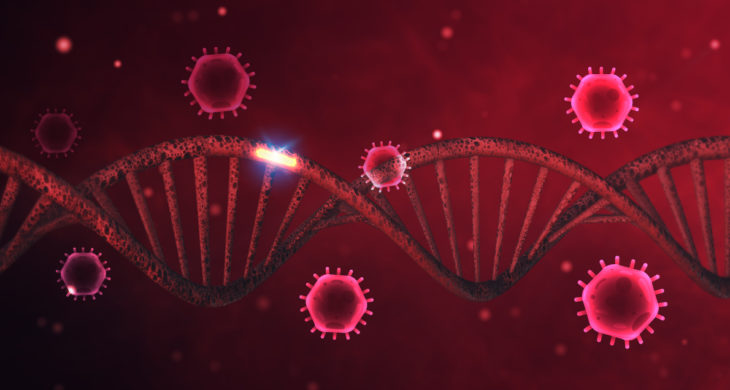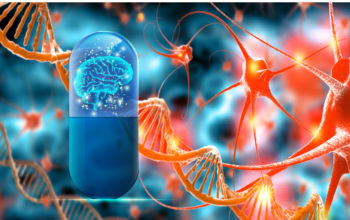
Date: 30th November 2020
Oncolytic virus therapies hold great promise for cancer immunotherapy, and offer the potential to improve patient outcomes for many who have incurable malignancies. Whilst, intravenous delivery offers systemic access for immunotherapies, it also can be a hindrance as the viruses are exposed to the innate and adaptive immune system, meaning that disseminated metastatic diseases remain largely refractory. Now, scientists have re-engineered a human adenovirus making it stealthy to the innate immune system, which effectively suppressed tumour growth.
Natural immunoglobulin M (IgM) antibodies and complement components are among the most abundant proteins in the blood, and are crucial for the host antiviral defense system. They are an effective mechanism to limit the spread of bacterial and viral pathogens to vital organs through the bloodstream. Viral clearance from the blood by phagocytic cells - Kupffer cells - usually occurs in the liver, which can trigger activation of proinflammatory cytokines after high therapeutic viral doses are intravenously administered.
Human adenovirus (HAdv) is highly effective at infecting and killing various cancer cell types and therefore makes for an attractive oncolytic drug. However, systemic delivery of HAdv triggers potent systemic inflammatory response and hepatotoxicity.
Now, scientists led by Dmitry Shayakhmetov and Phoebe Stewart from Emery and Case Western Reserve University, US, have used compound targeted mutagenesis to minimise HAdv interactions with blood factors, creating a ‘stealth bomber’ virus that can suppress tumour growth and prolong survival without inducing hepatotoxicity.
The team started by determining which regions of HAdv were the principal sites mediating IgM binding, they then mutated combinations of these sites to abrogate this interaction, resulting in a replication competent virus, Ad5-3M.
In vitro incubation of Ad5-3M with mouse plasma or serum demonstrated that IgM antibodies and complement components did not bind to this mutated virus, and it was also resistant to inactivation by human sera containing low titers of neutralising antibodies. Importantly, the mutation didn’t alter the transduction efficacy of virus in a variety of cancerous cell lines, and viral growth and virus-mediated cell death remained unchanged.
In vivo testing of Ad5-3M
With the system showing promising preliminary data, the team then wanted to test the therapy in vivo. They intravenously injected Ad5-3M into wild type mice. In contrast to the unmodified HAdv, which was readily trapped in Kupffer cells in the liver, this colocalisation was reduced in the animals injected with Ad5-3M. This amounted to a five-fold reduction in the amount of viral genomic DNA present in these phagocytic cells. They also did not observe any necrosis of the Kupffer cells in the Ad5-3M mice in contrast to the control animals injected with wild type HAdv, in which cell death was reported.
Furthermore, whilst severe hepatotoxicity was induced with the wild type HAdv – which led to them being euthanized 72 hours post viral administration, the same dose of Ad5-3M injected intravenously resulted in all the mice surviving the systemic delivery. It also failed to trigger activation of the inflammatory cytokines and chemokines.
Whilst, the systemic administration was successful, and failed to induce toxicity, the question still remained as to whether Ad5-3M could target and kill cancerous cells. To answer this, the team subcutaneously grafted human lung adenocarcinoma cells into the flank of immunocompromised mice, tumours were allowed to establish and then the mice were intravenously injected with the virus. All the mice treated with the unmodified virus succumbed within 5 days due to hepatotoxicity however, in contrast, all of the tumour-bearing mice treated with Ad5-3M survived the experiment (100 days). For comparison, untreated tumour-bearing mice all died by 43 days therefore, Ad5-3M showed significant therapeutic properties.
Whilst, these results were very encouraging this mouse model had low levels of IgM in circulating blood, so to assess the system in a more clinically relevant model the team turned to a model which lacked functional T cells, but have normally sized spleens and have wild type amounts of circulating IgM antibodies - NCr/nude mice. Here, they established disseminated tumours in the lungs of the mice. Once again, all the tumour-bearing mice treated with unmodified Ad5-WT succumbed quickly with hepatotoxicity, this time within 3 days. Untreated mice with tumours had a mean survival of 49 days. However, the mice treated with Ad5-3M had an extended median survival of 61.5 days, and 3 out of 8 mice had a complete response with no detectable tumour cells at 51 days, and a survival up to 107 days after virus treatment. Collectively, these data showed that intravenous treatment with Ad5-3M extended the survival of mice with localised and disseminated cancer.
Conclusions and future applications
Intravenous delivery of therapeutic viruses is a highly desirable approach in cancer therapy, as it can potentially provide systemic access to oncolytic viruses allowing them to target disseminated tumours, and to reverse late, metastatic stages of disease. However, the immune system is a key barrier to this approach, often leading to viral clearance and toxicity especially in the liver. The team here, have developed an IgM and complement mediated resistant human virus by mutating IgM binding sites, which eliminated trapping in the liver and hepatotoxicity, and effectively suppressed tumour growth, and significantly extended the survival of tumour-bearing mice.
Circumventing the immune system is crucial for treating many diseases, and we are seeing novel therapeutics being designed to manipulate it. One such example are nanogel loaded backpacks which stimulate suppression of the immune system to treat autoimmune diseases or graft-versus-host diseases. With respect to cancer, tumour cancer membranes have been used to artificially wrap oncolytic viruses to evade anti-viral immune response.
Whilst, the methods scientists employ to influence the immune system may vary, the work presented here offers a generalised approach to engineering viruses that are amenable to systemic delivery, giving us a valuable tools that will potentially translate into life saving clinical therapies in the not so distant future.
Atasheva, S., C. C. Emerson, J. Yao, C. Young, P. L. Stewart and D. M. Shayakhmetov (2020). “Systemic cancer therapy with engineered adenovirus that evades innate immunity.” Science Translational Medicine 12(571): eabc6659.
https://doi.org/10.1126/scitranslmed.abc6659
